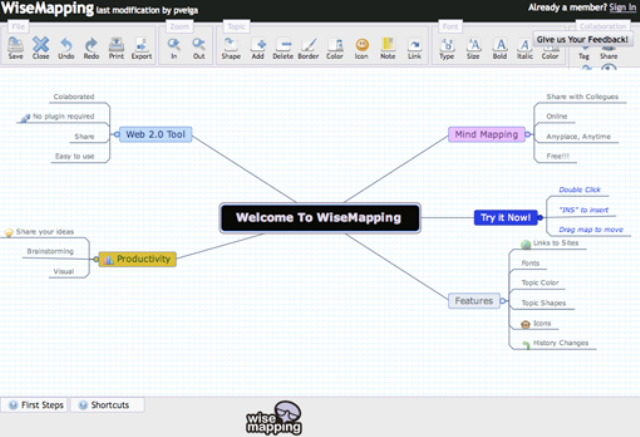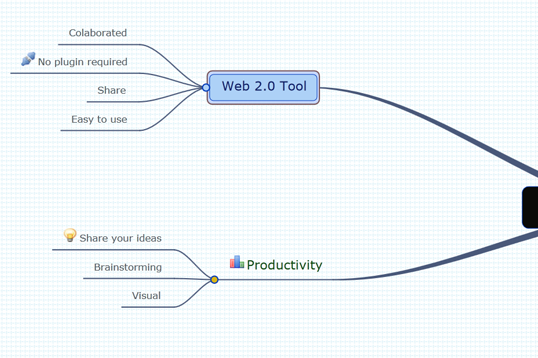WISEMAPPING
Homepage: http://www.wisemapping.com
Tool Category/ies: Critical Thinking Problem Solving
License Type: Free
Overall Rating
4/5
WiseMapping is a web mind mapping tool. Users will be able to create and read their mind maps from everywhere whenever it's needed. The features consist of: (a) Embeding the mind map it in web page, blog or post, (b) linking mind map and documents, (c) sharing mind map.
Other Tool Types
View All Tools
Rating: 4/5
Reviewed by: Kye on 06/07/2011
Cooperative or collaborative learning in mathematics has not been as successful as in other subjects. The small group dynamics in mathematics classrooms often lead to peer teaching, dominated by one or two students in the group. Moreover, The two most important activities in mathematics, problem solving and proof do not lend itself to collaboration for many reasons. We often hear from mathematicians and students alike, I do not remember what exactly went on when I solved the problem, leaving little room for collaboration. A Web 2.0 tool such as WiseMapping - critical thinking and problem solving, could provide mathematicians and students with an opportunity to make their thought process of problem solving or proving a theorem visible to themselves and others.
As illustrated in the example of WiseMapping, math instructors can use WiseMapping to help students to expose their ideas to themselves and other students before leaping into a solution phase. This is what makes collaboration in mathematics possible, and WiseMapping is a perfect tool for the task. Consequently, I would use WiseMapping in any teaching scenario in which collaboration or multiple perspectives is a key to learning. I present two specific scenarios.
Scenario #1
I teach one section of low division precalculus each year. My teaching method - let students work on problems alone, let them collaborate on them, and let them present their work to the whole class with minimal lectures - has not been as successful as in my other upper division courses. One particular area of concern is the degree to which they collaborate in the beginning of each class. Firstly, they are not mathematically mature enough to exchange ideas toward a solution. secondly, it is questionable if they worked alone as they were supposed to do so before each class. I would ask students to use WiseMapping to exchange their ideas on the problems within each group. That way, students will be forced to work and share their ideas before each class. As a consequence, I as a teacher expect more lively discussions in class.
Scenario #2
Another difficult area in college mathematics teaching is to teach students to learn multiple perspectives about problem solving or proof. It should be noted that the two dimensional and nonlinear aspect of WiseMapping is a perfect environment for learning multiple perspectives. Almost all solutions of math problems show the linear, one way only characteristics. It would be very difficult for students to imagine other ways to solve the same problem in such environments. Hence, I would use WiseMapping in challenging problems and projects in my geometry class for educational majors in order to teach them there are always more than one way to do in math. The goal would be to have future teachers think about the challenging problem early on, then share their ideas together so that multiple perspectives are generated and appreciated by themselves.
What are the advantages of using this tool in a teaching environment?
Two major advantages of using WiseMapping in teaching mathematics are: a) have students reveal their thought process of problem solving or proof, thus make possible collaboration on developing and sharing ideas toward problem solving or proof.
What are the disadvantages of using this tool in a teaching environment?
One disadvantage of using this particular tool is the fact that the product is not supported either by the strong non-profit company or by a stable company. There is a chance that the product will cease to exist. Another disadvantage could be not having multiple association types between the nodes. Each node can have only single line of information.
©2011- The University of Houston. All rights reserved.
4800 Calhoun Road, Houston, Texas 77204 (713) 743-2255

